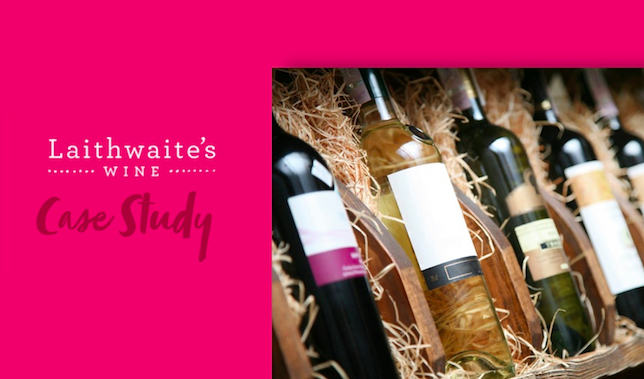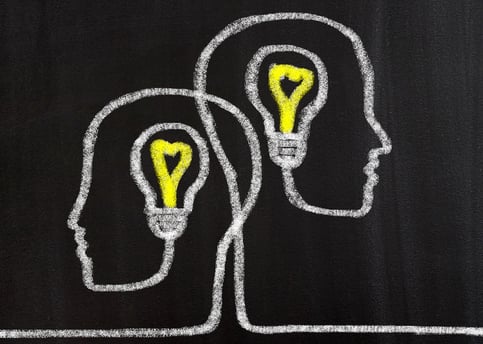3 cognitive triggers to optimise your marketing efforts
Understanding some of the basics of the psychology of persuasion and how to apply them, can make a huge difference to your marketing efforts.
In the past, we’ve spoken about Cialdini’s 6 weapons of influence, as one of the most useful set of psychological principles that can help shape and optimise brand communications — not least, referral marketing campaigns.
In truth, there’s a whole universe of theories and heuristics belonging to a wider field of behavioral economics.
Behavioral economics basically describes the effects of psychological, social, cognitive, and emotional factors on human economic decision making.
This obviously includes the dynamics of deciding to buy. And for this reason, having a good grasp of some key ‘cognitive triggers’, rooted in behavioral economics theory, is a good idea for any ecommerce marketer.
Let’s take a closer look at 3 of the most well-known ‘cognitive triggers’, and how they can be applied to your marketing efforts…
Anchoring and the decoy effect
What is it?
Anchoring describes the power of the opening offer, when presented as part of a series of options. I.e. The first option presented to a recipient ‘anchors’ expectations in such a way that it acts as a reference point for all subsequent offers. So if the highest price is presented first to a customer, that becomes the benchmark for ensuing negotiation.
For example, a customer shopping for a new suit may wince at being first presented with a £1,000 option — but if they’re then presented with a £500 suit, they may be more amenable (even if they initially walked into the store with a £300 budget in mind).
A variation on anchoring theory is the decoy effect. When two distinct offers are on the table, the presence of a third ‘decoy’ option increases the attractiveness of the higher-value offer. We see this a lot in the world of publishing. For example, let’s say you want to subscribe to a magazine. You’re presented with the following options:
Digital edition: £59
Digital and print: £125
If your primary interest is value for money, you may well conclude that, although a physical copy through the letterbox is a nice-to-have, it’s not really worth shelling out over twice the amount, for the luxury. A digital-only subscription will do.
Now, consider the same scenario... except this time, a third option is included in the mix, as follows:
Digital edition: £59
Print edition: £125
Digital and print: £125
This time, instead of our attention being drawn to how much cheaper the digital-only subscription is, our brains light up at the apparent deal to be had on the digital plus print subscription. The print-only version is a decoy. It causes us to think: Hang on… I can get both versions for the same cost as if I just subscribed to print? Great deal!
How to apply
These principles are especially important when it comes to pricing tables and presenting multiple product options. Consider ‘anchoring’ your pricing structure so that the option you most want to convert is contrasted against a much pricier offering.
In addition, consider throwing a ‘decoy’ option into your product mix, to help attract people to the value of your premium offerings, rather than opting for the cheapest by default.
Paradox of choice, cognitive load and the "less is more" approach
What is it?
Our brain, like any computer, has a limited processing capacity. When we’re presented with a lot of incoming information we find it incredibly difficult to make sense of things. And when the incoming information is presenting us with a set of options and guiding us to make a decision, that’s an issue.
In other words, although in modern society we associate choice with freedom and autonomy, too much of it can be a bad thing.
Psychologist Barry Schwartz popularised this notion in his book, The Paradox of Choice. He cites a study where two displays of jam were set up in a shop. Customers were invited to sample the jams, and were offered a dollar discount coupon if they decided to buy one. In one display there were six jams, in the other 24. What happened? 30% of those presented with the small jam selection, purchased a jar. In comparison, just 3% of those exposed to the larger selection bought anything.

The lesson for marketers is pretty self explanatory: too much choice increases cognitive load, which increases anxiety — and results in ‘analysis paralysis’. In the digital age, it’s more critical than ever to take a ‘less is more’ approach to communicating our offerings in order for them to stand a chance of resonating with prospective customers.
How to apply
Adopt a ‘less is more’ approach to your content and design, keeping landing and sales pages clean, clutter-free, and succinct.
Multiple messages and calls to action will bamboozle prospects. Stick to one, clear and actionable next step. Limit the number of product and pricing options to an easily scannable and digestible amount — three is a typical limit, and lends itself well to applying the previous anchoring and decoy principles.
Familiarity principle
What is it?
Another subconscious yet self-evident cognitive bias is that we tend to buy from brands and through people that we’re familiar with. Familiarity instills a sense of comfort and safety.
This is why we tend to prefer to buy the same branded products we’ve bought before, from the same shops, offline and online — and vice versa, suddenly switching to a new, untested brand, or buying from an as yet unfrequented shop, is something we have to stop and think about, before committing. This is the essence of brand loyalty.
It’s crucial to instil a sense of familiarity and belonging to both prospective as well as existing customers. By regularly communicating with our audiences in an authentic and approachable way, we’re adopting the familiarity principle.
The familiarity principle is also at the heart of referral marketing campaigns. When someone we know and like recommends a new product to us, we’re far more likely to trust in that product, than if we received a cold approach from the brand, which we may not otherwise be at all familiar with.
How to apply
Developing a consistent and distinctive brand tone and voice, and regularly communicating with your audiences across multiple digital touch points in ways that build up healthy conversation, helps to create and maintain a sense of brand familiarity (and therefore, loyalty) amongst your customers.
Also, in the digital age, creating a strong community around your brand is a sure-fire way of leveraging the familiarity principle to your advantage. Having brand champions and fans who are willing to recommend your products — either informally, or more formally through referral programs — is one of the best ways of getting the familiarity principle to work in your favour.

Never miss another update
Subscribe to our blog and get monthly emails packed full of the latest marketing trends and tips







